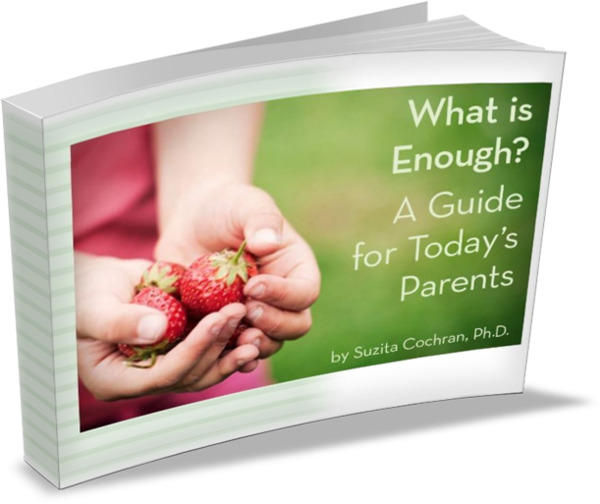 When my son Stephen was a year old, I visited my aunt and cousins in Seattle. While we toured their recently renovated home, my aunt commented that kids have different “space needs” as they grow, and ideally one can expand a house here and there so it can grow with them.
When my son Stephen was a year old, I visited my aunt and cousins in Seattle. While we toured their recently renovated home, my aunt commented that kids have different “space needs” as they grow, and ideally one can expand a house here and there so it can grow with them.
I remembered looking at my outwardly calm, teenage cousins and wondering just what my Aunt Rika meant by this. My energetic toddler seemed to need infinitely more space than these low-key girls. But I figured I’d cross that bridge when I got there. Most likely I was soon distracted by the need to protect their lovely home from Stephen’s tottering energy.
In the past couple of years, I’ve returned to my aunt’s advice. As my two oldest kids have grown, they’ve begun bumping into each other more frequently in our small home. Sometimes this seems to be for the pleasure of the contact. Our boys speak to each other physically as well as verbally. Other times it reflected the crowding in the bedroom they shared as they grew taller by the month. This prompted us to move toward “growing” our house.
Each summer Todd and I take on at least one moderately challenging home improvement project in our home. Last year we created an egress window in our basement which allowed Stephen to move into his own bedroom down there. In the process we dug and hauled more dirt than I ever believed possible. (See the Digging the Whole Hole post, one of my favorites.)
This summer we are demolishing an interior wall in the basement, and erecting a new one. This will yield one medium-sized bedroom for Stephen and another larger multi-purpose room. The big room will serve mainly as a kids’ rec room.
We hope to fit a small ping-pong table in one part and create a movie watching zone in a second area (with a home office nook thrown in as well). We wanted to make a space for our kids and their friends to hang out, now and in years to come, separate from the regular family areas. Our kids may still end up spending all their down time at friends’ houses, but at least we will have made an attempt at keeping them here.
So here we are midway through the remodel.
Todd and I did indeed demolish the wall on our own during the kids’ last two days of school. The demolition was physically challenging but surprisingly satisfying, aside from the abundant dust. And happily, we found the wood studs in good shape and reusable. Next we’ve been watching our contractor, Alex, build the new wall. It’s halfway complete.
The surprise was that the remodel itself wasn’t the hardest aspect of this process. Instead the rough part has been the five of us living in a space the size of a hotel suite. This, my friends, has not been pretty. Why did I not foresee this?
As I was moving the contents of a bookshelf to prep for the demolition, I came across a book I’d read eight or nine years ago, Raising Your Spirited Child: A Guide for Parents Whose Child is More Intense, Sensitive, Perceptive, Persistent, and Energetic, by Mary Sheedy Kurcinka. I’d read it first more as a child psychologist than a parent. I’d heard rave reviews from many a parent and wanted to see for myself. When I found the book the other day, something urged me to re-read it.
These days my kids don’t fit the typical definition of spirited. And though my husband has referred to me as “high maintenance, but in a good way” more than once, I didn’t expect to see myself on so many of this book’s pages! Perhaps it should be titled Living with Your Spirited Mom.
On other pages I also see my kids, and lastly even some of my husband. Todd is probably the least “spirited” of the five of us. Remember how he was also the one who we predicted wouldn’t eat the marshmallow in the Marshmallow Test for self-control? Not fair.
But it turns out these personality variables which lead us to be more or less spirited are part of our innate temperaments. We are born with these genetically based temperament characteristics and we can work with them, but we can’t change them.
In the 1950’s personality researchers Stella Chess and Alexander Thomas were among the first to describe temperament. They identified nine temperament traits, each on a continuum from mild to extreme. Spirited children tend to fall on the extreme end of some to many of these traits.
So I’m reading about temperament, amidst loud banging and high-pitched drilling coming from our lower level, while dust defies gravity by wafting upstairs as if our not-so-big basement simply can’t contain it all. The smell of the dust is somewhere between chalk, paste, and a more intense chemical that I don’t want to think too hard about, or I will definitely become more spirited than I wish to be.
I look up from my book and see three additional bookshelves and two beanbag chairs which usually live downstairs, somehow stuffed into the corner of our already European-sized (read: small but workable) living room.
It occurs to me that I probably struggle more than I realized with the temperament traits of adaptability (how we handle changes and transitions in our lives) and sensitivity (heightened awareness of noises, smells, lights, textures, or changes in mood).
As I read another chapter, I am informed that introverts need their own private space in order to recharge. This renovation has taken my most introverted child, Stephen, out of the bedroom he waited eleven years for, and back to sharing a room with his brother. Upon reading this, I went straight to our bedroom to clear a space on our window seat for Stephen. At least he’d have one small place in which to read in peace.
Then there are my two extroverted children, Daniel and Annie. This project has cut into their social schedules quite severely. We’ve been so focused on the remodel work that we haven’t let them have friends over regularly. “As soon as the new room is done” isn’t working anymore. Annie has been getting surly, and Daniel has been sneaking time on his brother’s eight year-old, hand-me-down iPod which evidently has one video game on its tiny screen. Who knew?
The last thing I am reminded of when reading the Spirited Child book is the fact that all five of our family members are either high or extremely high on the temperament trait called energy level. We don’t do well sitting, standing, or being still. Perhaps this is why you see an exercise theme consistently running through this blog.
When we are stressed or cooped up, we need to move even more than usual. Therefore my new family survival plan, at least until the basement project is finished, is to exercise (whether working out at the gym or playing at the park) with the kids at least three times a day.
Sound tiring? Perhaps you were lucky to be born lower on the energy level continuum than we happen to be! If so, just sit back and enjoy it.
Comments? Leave one below!

 Sweet Spots: Helping Your Kids Find ENOUGH in Their Lives.
Sweet Spots: Helping Your Kids Find ENOUGH in Their Lives.


The need for space/running around reminds me of when your kids were younger. I remember visiting with my one year old, and you and Todd were constantly planning outings – be they walks around the block to trips to Pearl Street or even Denver – to keep the kids busy and out of each others “space.” Seems these stresses on the norm of our safety zone of home cause reversion to our younger ways?
Good point. I think we are all reverting a few years back in time right now!
As someone who loves building and home improvements, I’m impressed by the extra considerations that you are taking aside from the actual building process. Your situation reminds me of This Old House, except with 3 children that need to let off steam consistently. With less space, it seems you are definitely forced to learn more about one another. I seem to recall a painting on the wall in your house with a saying of “Close quarters make for …” On the other hand, having so much space that you can avoid people isn’t always good either in my experience. As I remember my childhood friends and their families, smaller spaces often led to healthier families – at least from the perception of child!
Yes, our plaque says, “Close quarters create close families.” I think this past few weeks has shown us the line between close quarters in a good way, and a little too close. But I do agree with you that living in close proximity with others makes you stay connected with them. I hope my kids will agree with me as they look back on this aspect of their childhood some day. (Currently they are sleeping in two small tents in the backyard, that’s close quarters and they love it.)